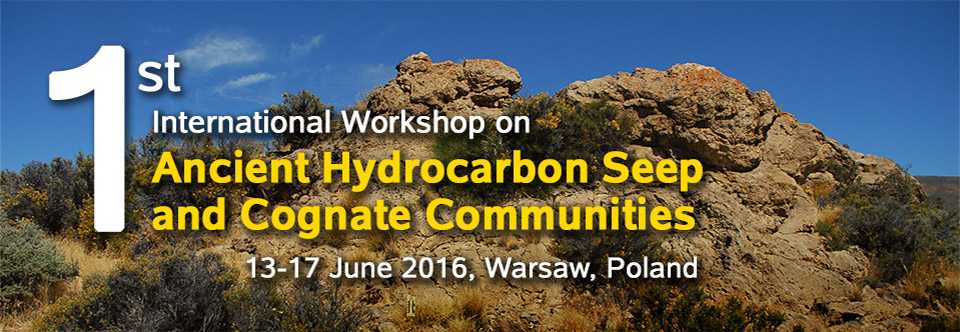
ISOTOPE AND FAUNAL COMPOSITION OF COLD-METHANE SEEP DEPOSITS FROM THE UPPER CRETACEOUS PIERRE SHALE, SOUTH DAKOTA
Jone NAUJOKAITYTE1, Ana DANILOVA1, Matthew P. GARB1, Neil H. LANDMAN2, Tyler LEVITSKY1, and J. Kirk COCHRAN3
1Earth and Environmental Sciences, Brooklyn College, 2900 Bedford Ave, Brooklyn, NY 11210, USA; 2Division of Paleontology, American Museum of Natural History, Central Park West at 79th St, New York, NY 10024, USA; 3School of Marine and Atmospheric Sciences, Stony Brook University, Stony Brook, NY 11794, USA.
Corresponding author: jonenaujok@gmail.com
Methane seep deposits are common in the Upper Cretaceous (Baculites scotti to Baculites compressus
Biozones) of the Pierre Shale of South Dakota. The seeps support a diverse community
of mollusks, echinoderms, serpulids, and other invertebrates. The development of the seeps
and the dynamics of the communities are still poorly understood. Several morphotypes of seep
associated concretions (SACs) occur as a result of methane-enriched flow. These include platy/
tabular fossiliferous pavements, pipes, tubes, irregular masses, balls, and globular masses. Study of
concretion shapes, isotope signatures, and faunal composition can provide important clues into
the development of the seeps and their plumbing systems. Carbonate concretions were collected
from seven localities in South Dakota to identify the fauna and determine the oxygen and carbon
isotope composition. In addition, the same samples were analyzed to reveal the strontium isotope
composition. A single concretion from an age- equivalent non- seep deposit was also analyzed for
comparison. Our data reveal that the seep concretions are composed of calcitic micrite with light
values of δ13C (-40%0) typical of methane influenced carbonate precipitation. The concretions also
contain sparry calcite, with slightly heavier values of δ13C (-10%0), suggesting that they formed later
with less methane influence. Comparison of 87Sr/86Sr in seep carbonates with coeval seawater values
provides information on fluid flow in the seep systems. In at least one seep studied, values are
elevated markedly above seawater, suggesting equilibration of the fluids with a radiogenic source
of Sr at depth in the deposit and advective fluid transfer toward the sediment-water interface. In
general, pipes, tubes, and balls are relatively unfossiliferous whereas the irregular carbonate masses
contain up to 15 species of molluscs. These differences may reflect where the concretions formed
(at or below the sediment-water interface) and by what processes (diffusion or advection).
